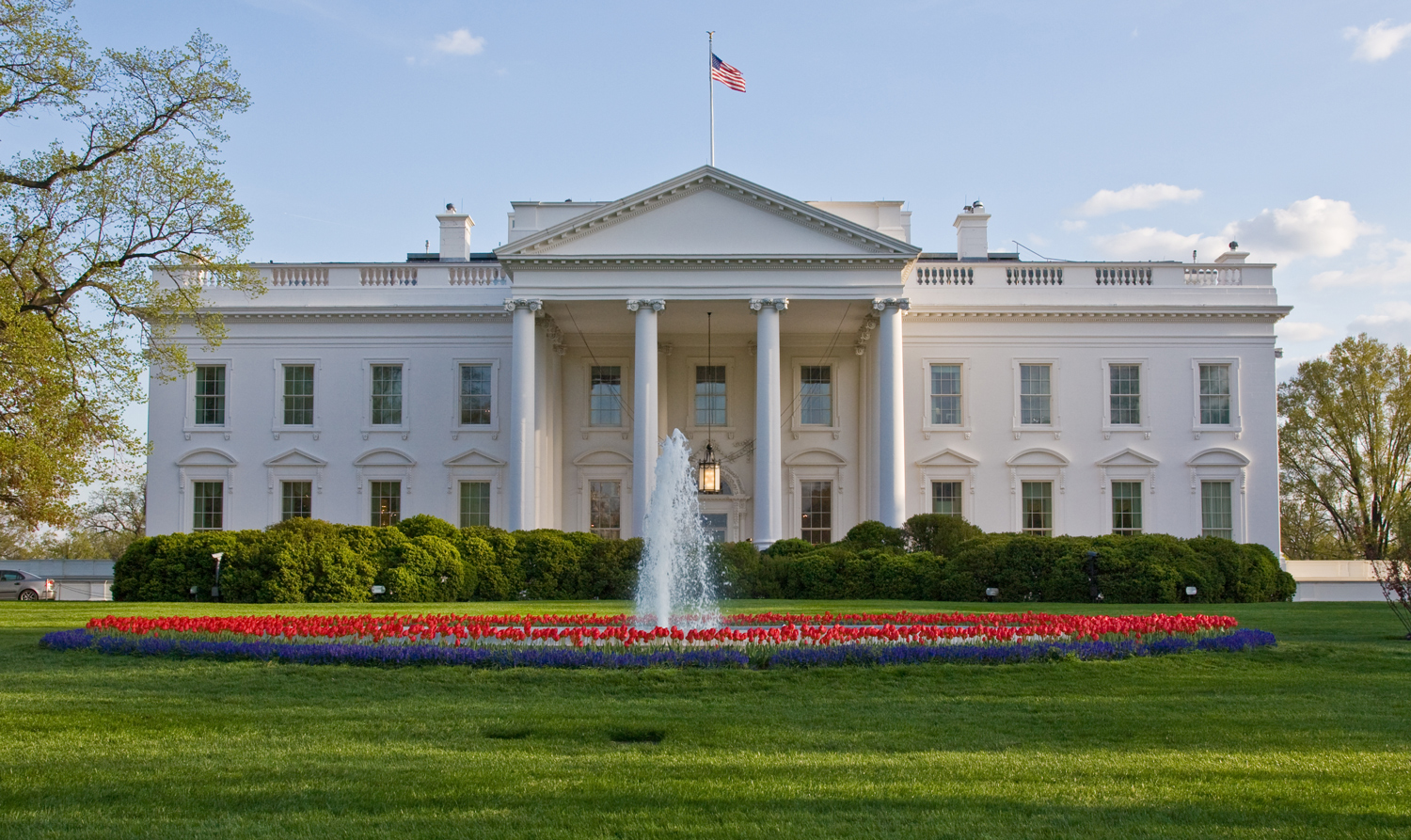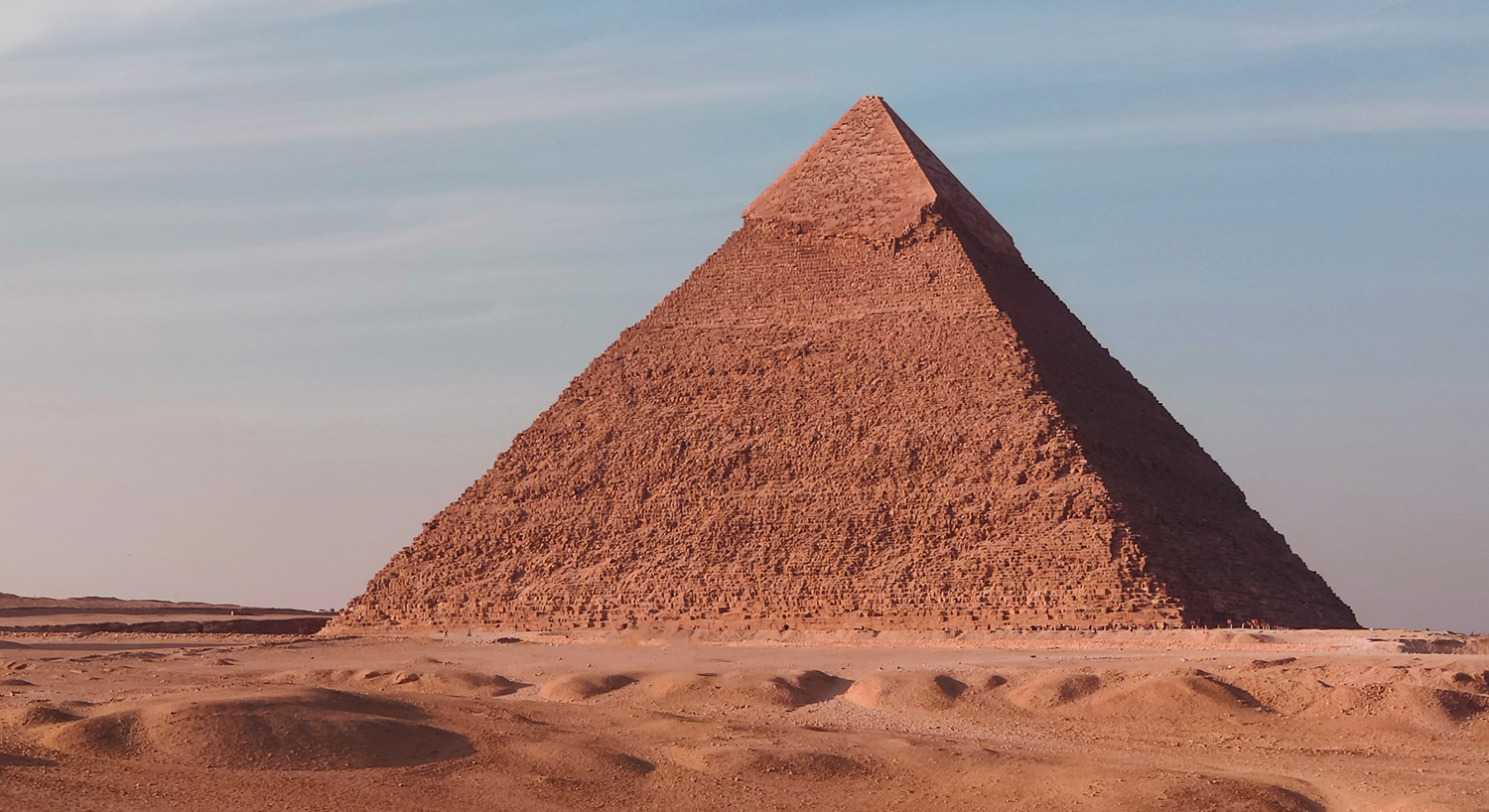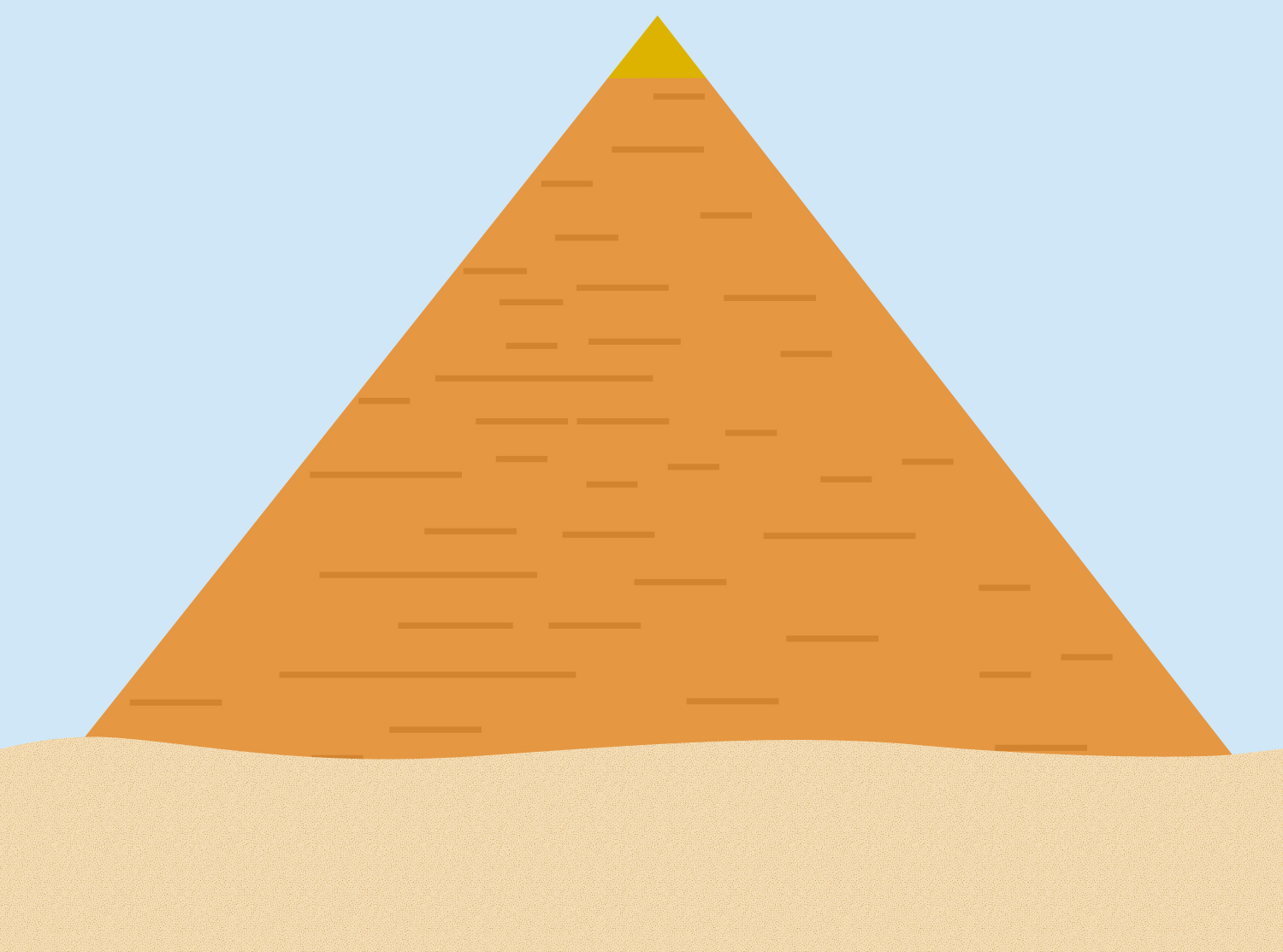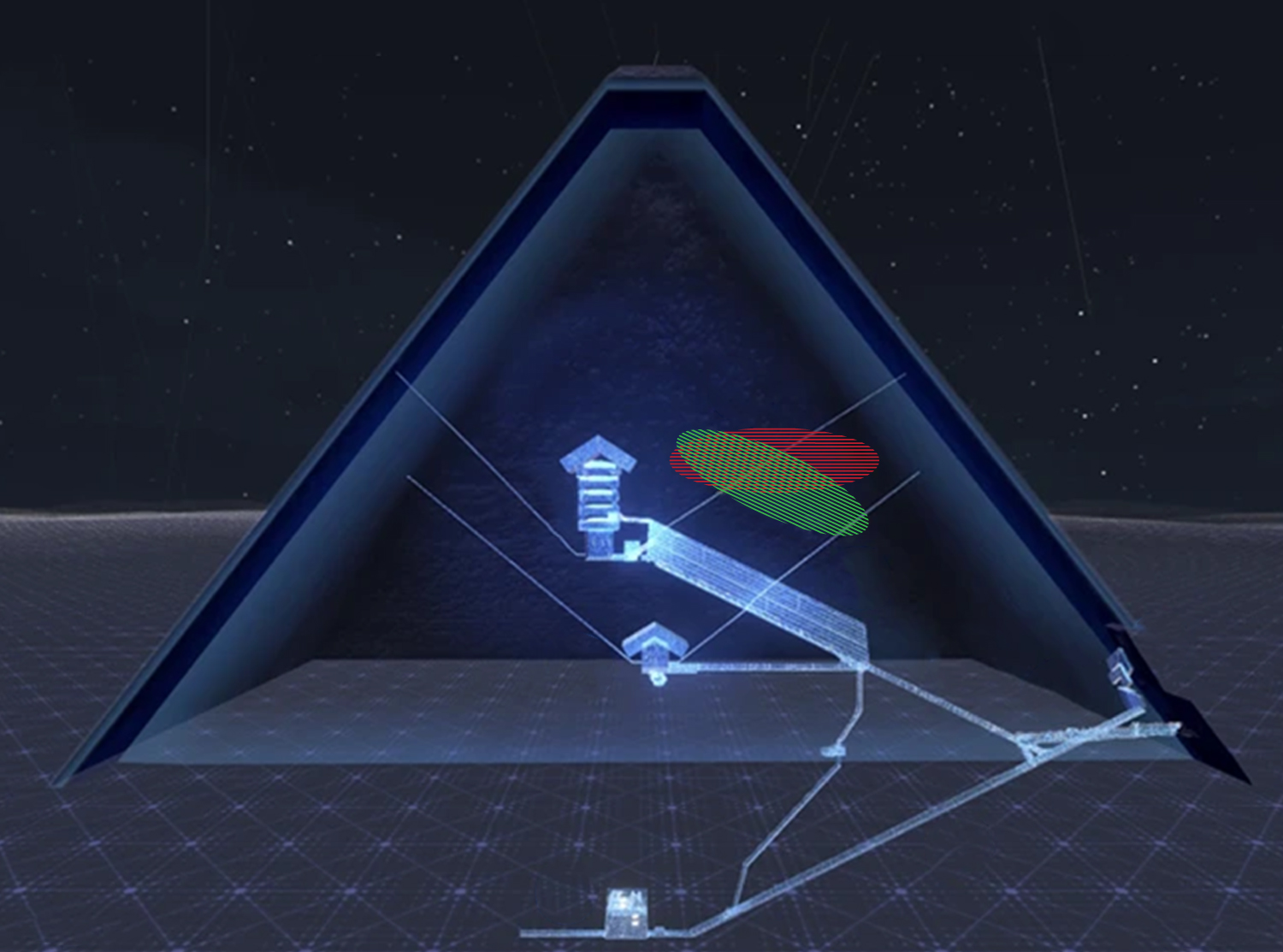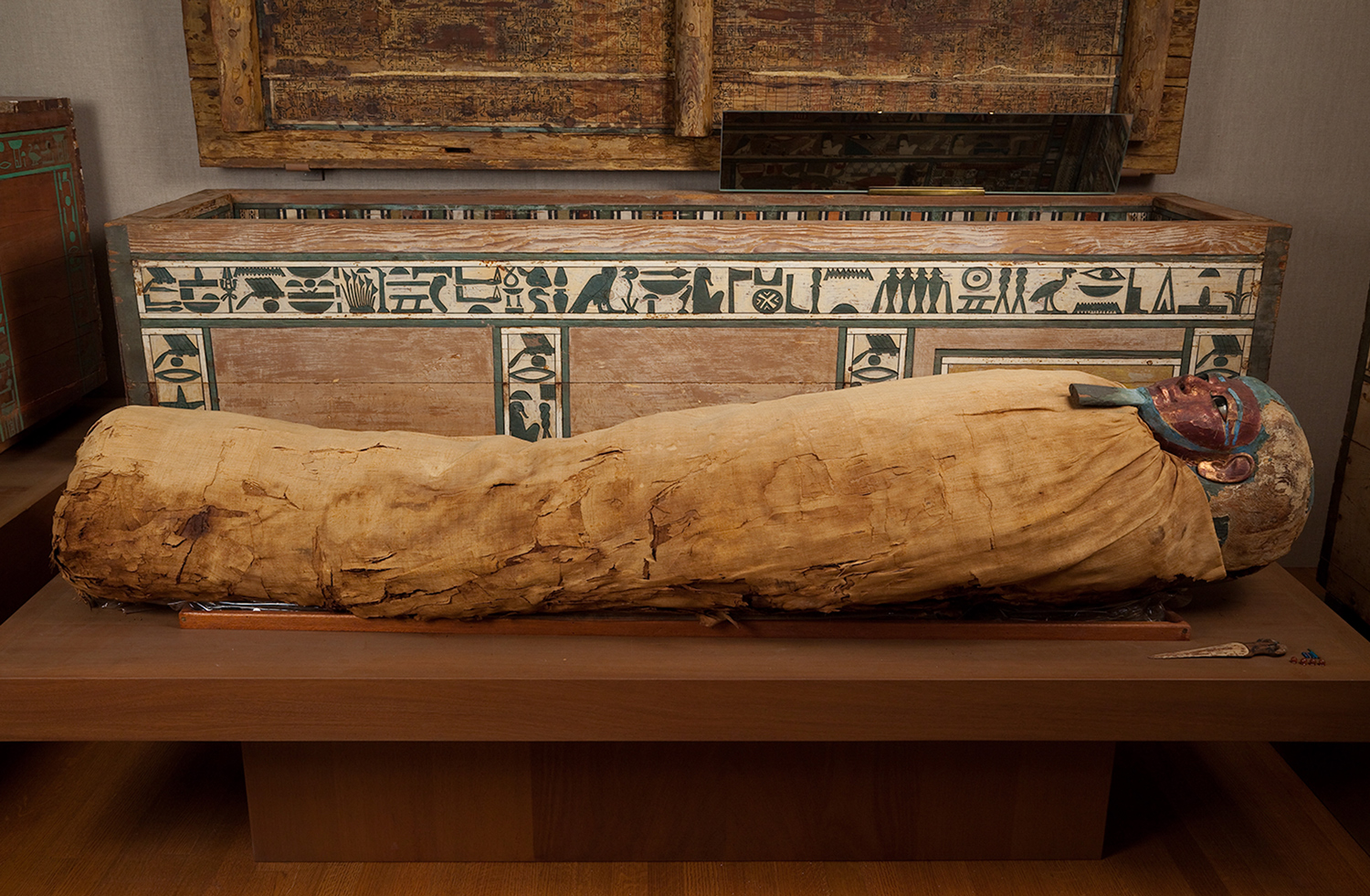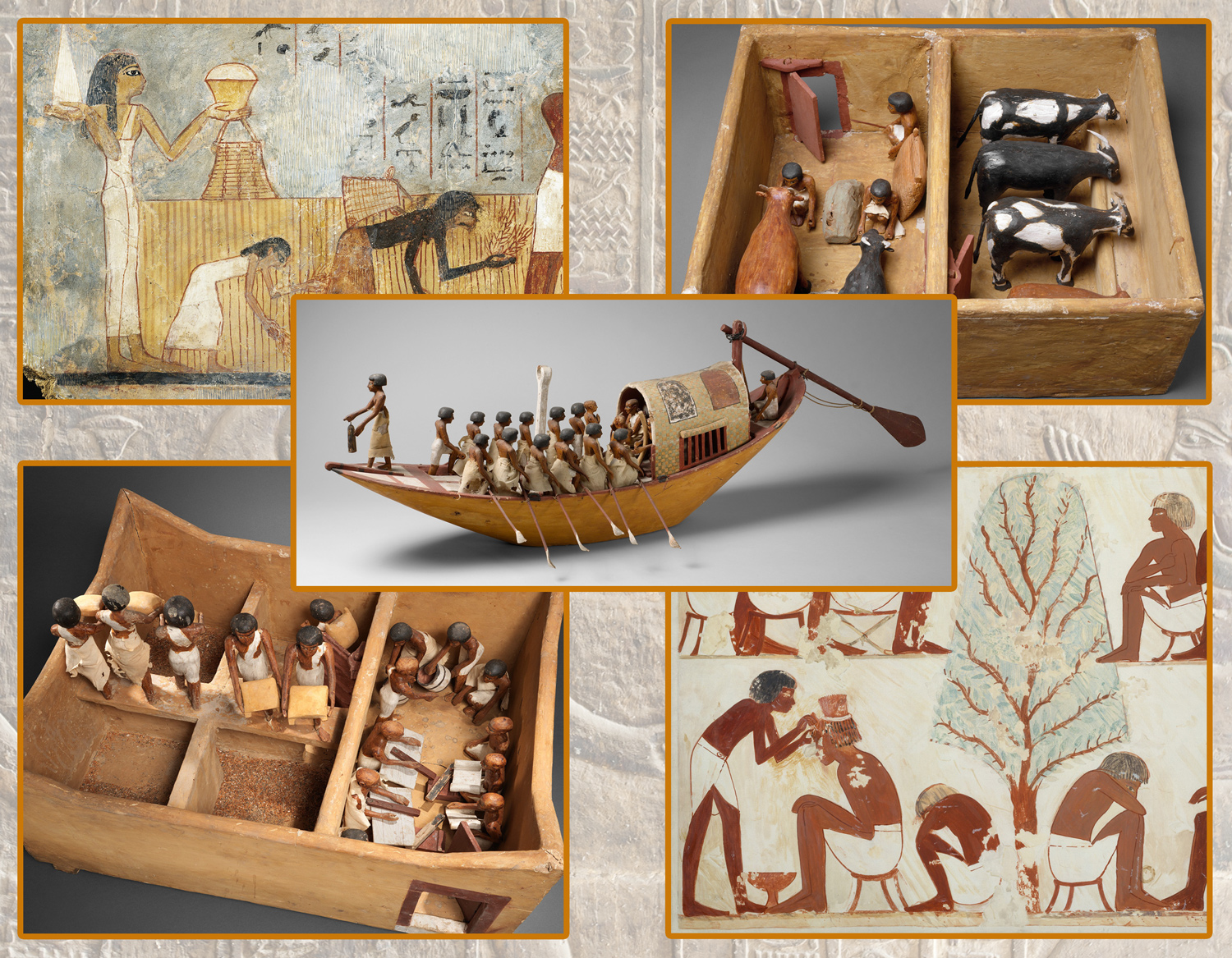Museum Takes Visitors to Ancient Egypt
In Cairo, Egypt, a huge new museum holds statues, coffins, jewelry, and other treasures of ancient Egypt.
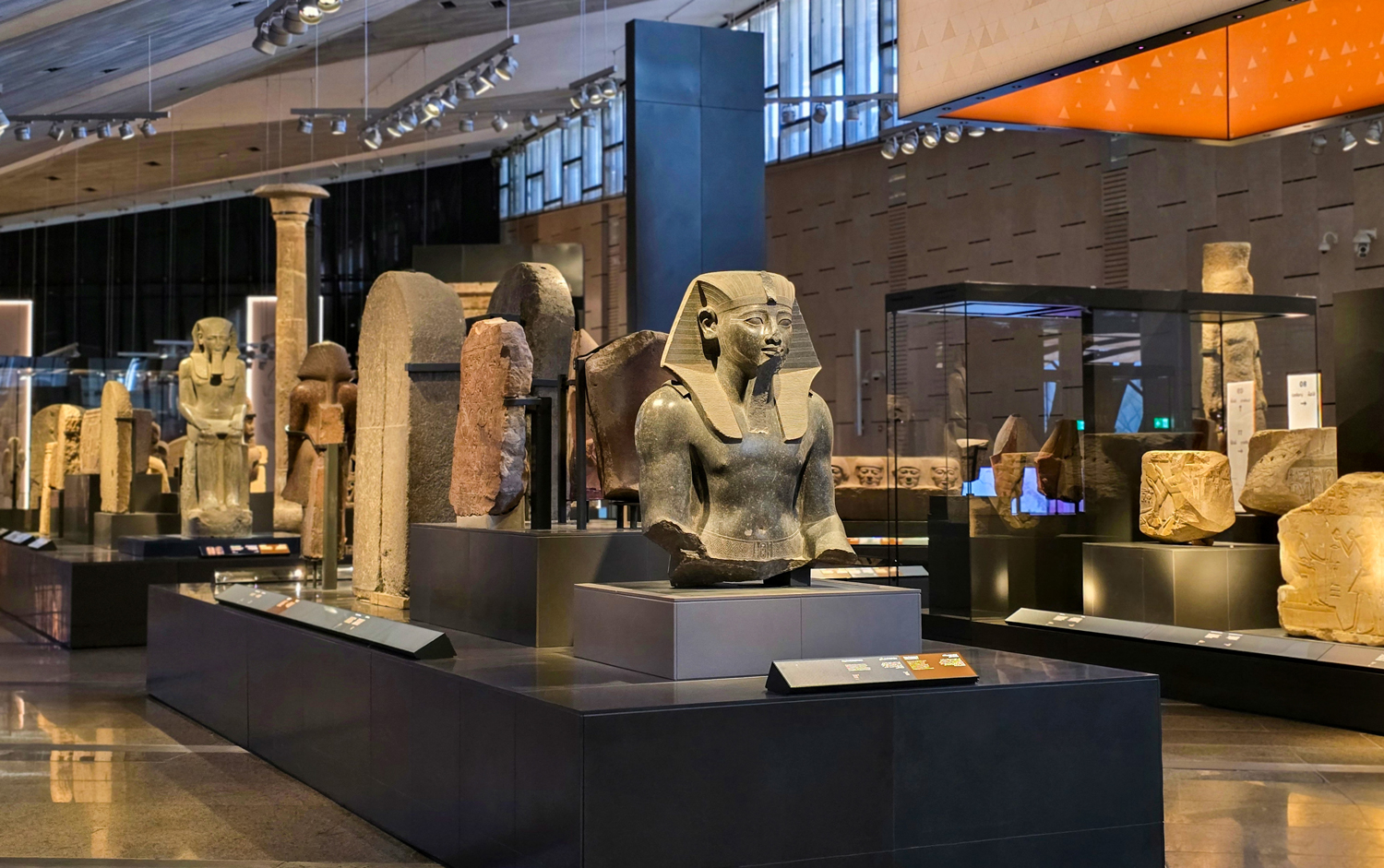
© Sayed Hassan/Getty Images
Although the Grand Egyptian Museum is only partially open, there’s already plenty to see.
Thousands of years ago, kings called pharaohs ruled over ancient Egypt. They built giant palaces, temples, and pyramids. They had statues made to look like them. When a pharaoh died, their body was placed in a sarcophagus (coffin) painted to look like them and buried with jewelry and other priceless gold objects. Egypt has a larger-than-life history, and it’s now being told at the enormous new Grand Egyptian Museum outside Cairo, Egypt.
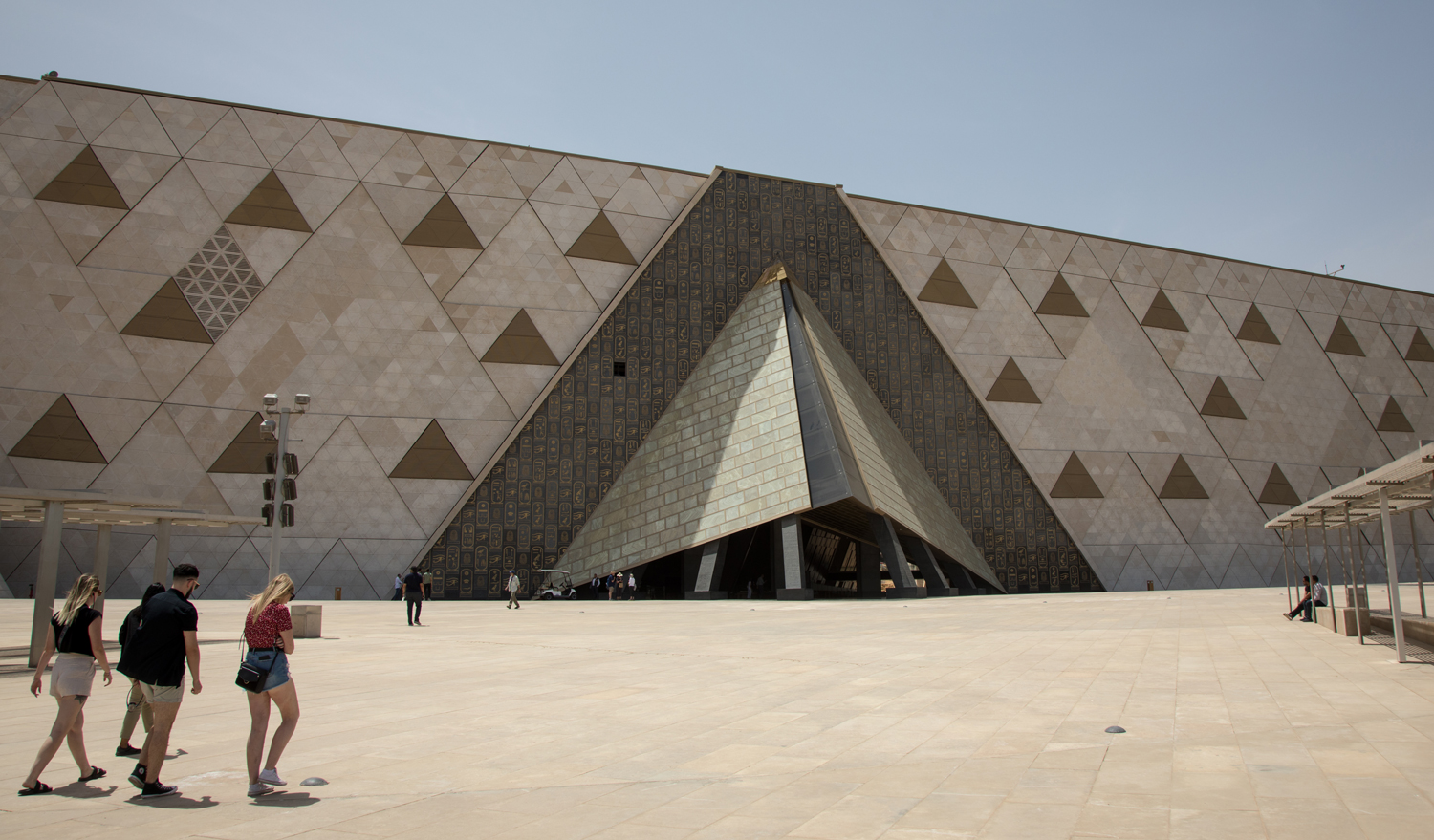
© Fadel Dawod/Getty Images
Visitors walk outside the main hall at the Grand Egyptian Museum near Cairo, Egypt.
Only part of the 5-million-square-foot (465,000-square-meter) museum is open so far—and it’s filled with objects the ancient Egyptians left behind. Visitors can climb a six-story grand staircase lined with statues of pharaohs. They can stroll through a big, high-ceilinged space full of monuments, jewelry, more statues, and sarcophagi. Eventually, the museum will display about 100,000 objects!
One of the future exhibits will be all about King Tutankhamun (also called King Tut). Tutankhamun, who died when he was only 18, became famous when his treasure-filled tomb was discovered in the 1920s. The museum will display part of the contents of Tut’s tomb, including the gold, bejeweled mask that was placed over the king’s face when he was buried.
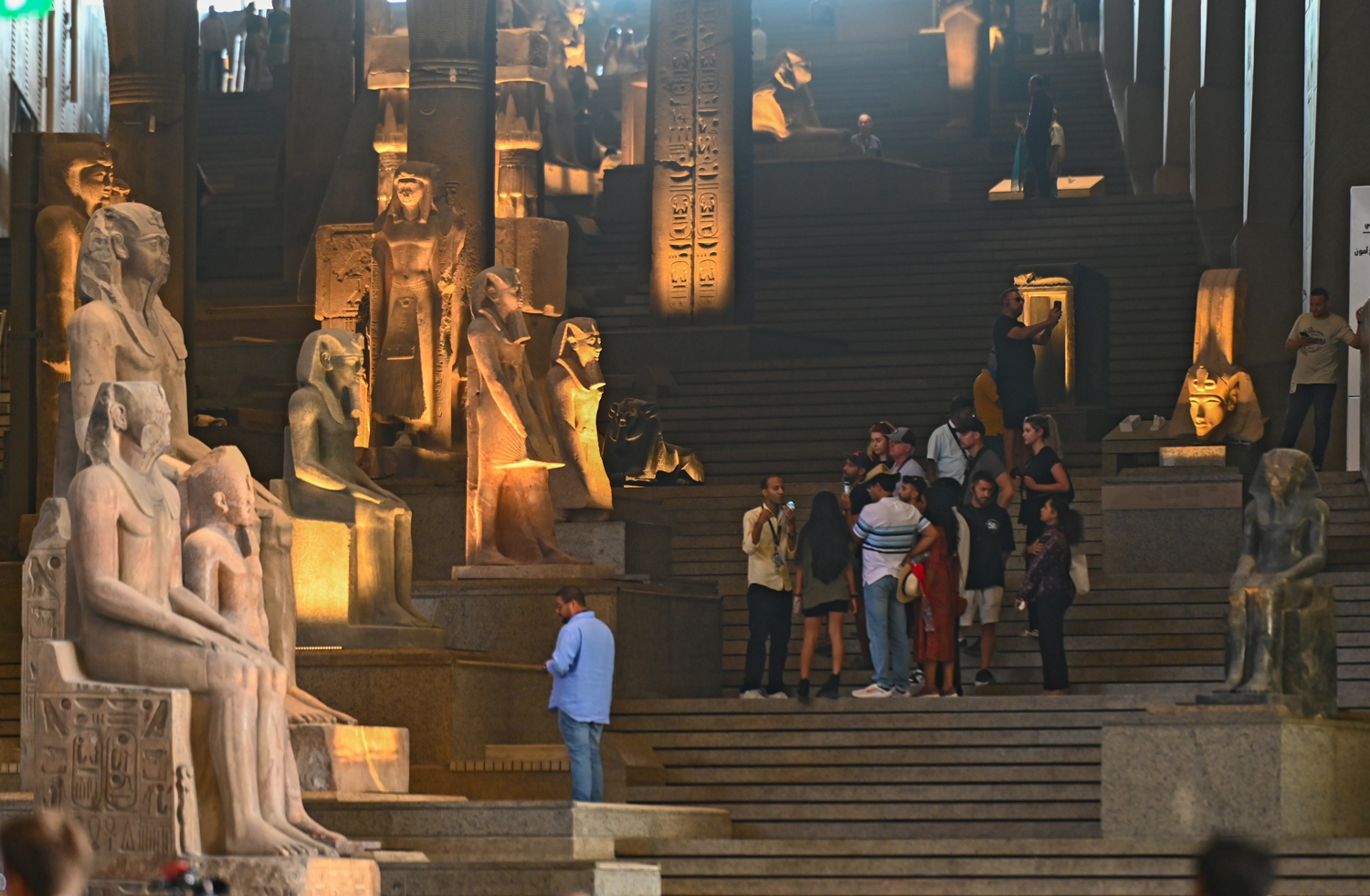
© Sayed Hassan/Getty Images
Visitors check out the grand staircase and its many statues at the Grand Egyptian Museum.
Museum officials aren’t sure when the entire building will be open to the public. But Eissa Zidan, a director-general at the museum, promises that it will live up to its “grand” name.
“The museum is not only a place to display antiquities, but it also aims to attract children to learn about ancient Egyptian history,” Zidan told the Associated Press. “The museum is a gift to all the world.”
